I will compare and contrast the game “Picky Eaters”(https://lefougames.com/pickyeaters) with our team’s concept.
Game Concepts
Picky Eaters aims for players to compete to prepare the best dinner for 5 picky guests! Each guest has specific food preferences (loves, likes, dislikes, and restrictions). By gathering groceries and preparing meals, players will try to appease their growing list of picky guests as strategically as possible. Our team’s P1 is a recipe-building game, What’s For Dinner, where the different players each with ingredients collaborate to build one recipe.
Central Argument
Although based on the same ingredients as recipe-building concepts, Picky Eaters immerses players in a competitive culinary challenge where satisfying a diverse group of guests with specific tastes is key. Contrastingly, our team’s concept encourages players to cooperatively construct a single recipe, shifting the focus from competition to collaboration, thus offering a fundamentally different engagement with the game mechanics and player interaction.
Game Details
Name of Game: Picky Eaters
Creator: Le Fou
Platform: Card Game. I played Picky Eaters as a card game so it is in a similar format as our team’s game, players physically pick up and trade cards, which can make the experience feel more immersive and personal just like taking from the common market area.
Target Audience: Both Picky Eaters and our recipe-building game are suitable for everyone but intended especially for families and friends, promoting social interaction and fun across various age groups.
Analysis and Learning
Formal Elements
- Players:
Both games involve multiple players, each with a role in the meal creation process. - Objectives:
Picky Eaters: To create the most satisfying meals across several rounds, adapting to the evolving tastes of new guests, and managing both the pickiness of other players and the available resources.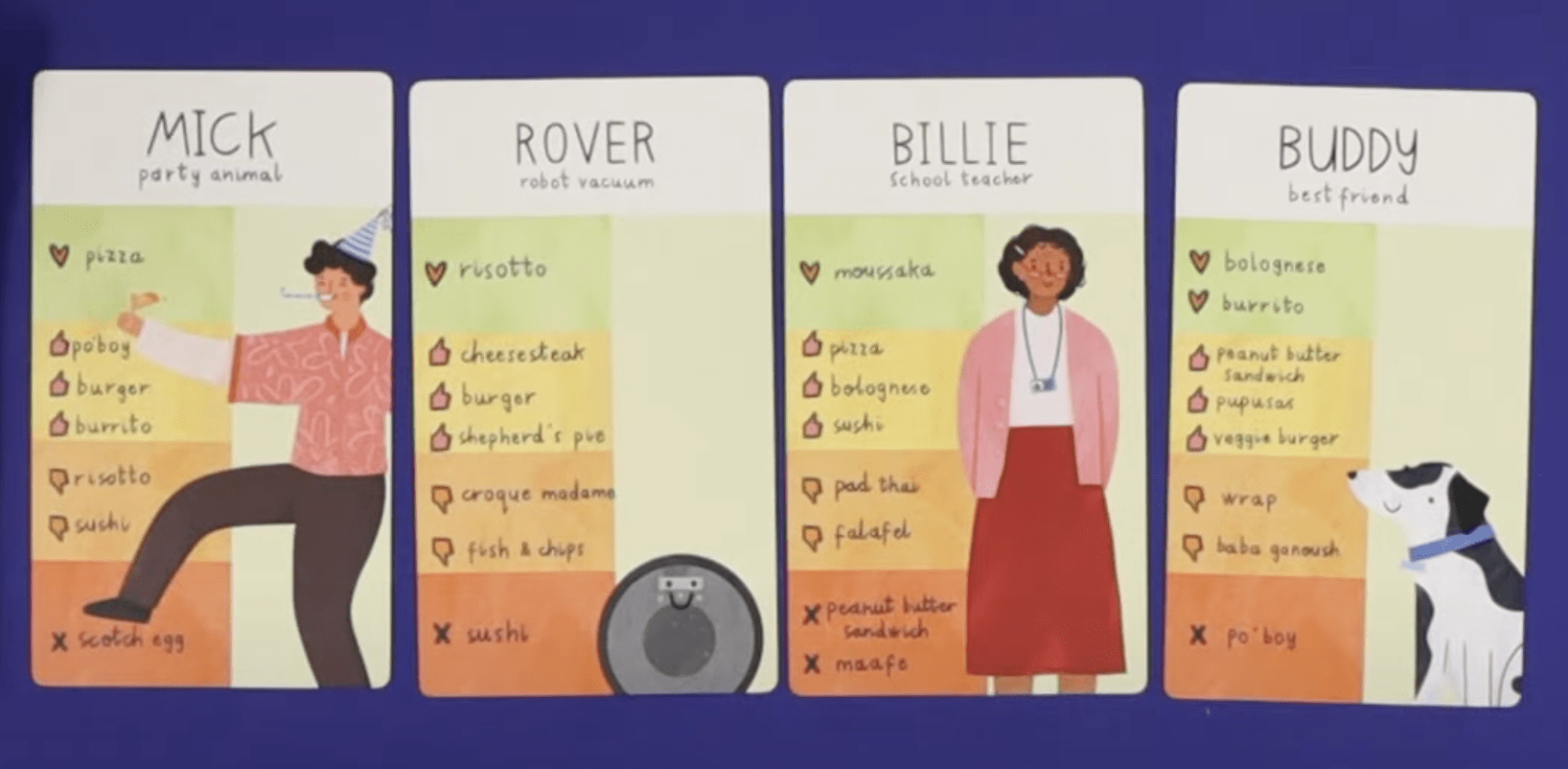
- Our Team Concept: To collectively devise a recipe that meets a shared goal or achieves the highest communal quality.
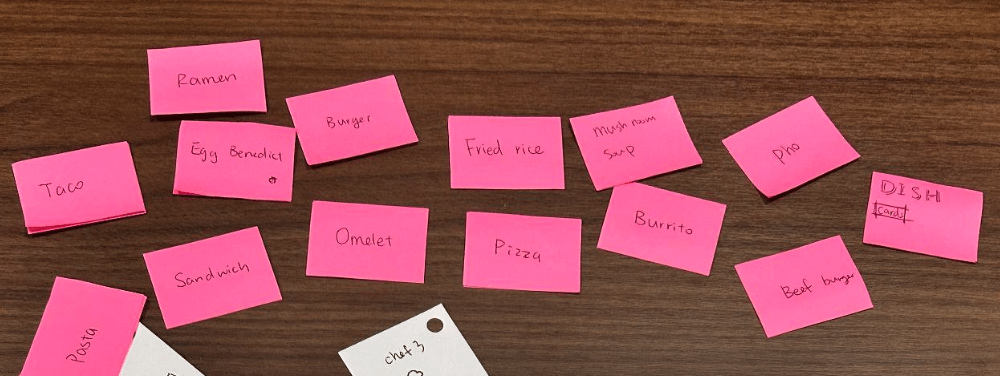
- Procedures:
Picky Eaters: Structured around multiple rounds, involving card management, strategic action selection, and adapting to new guest preferences.
Our Team Concept: Likely involves a more fluid exchange of ideas and ingredients, focusing on a cooperative strategy to decide the use of shared resources.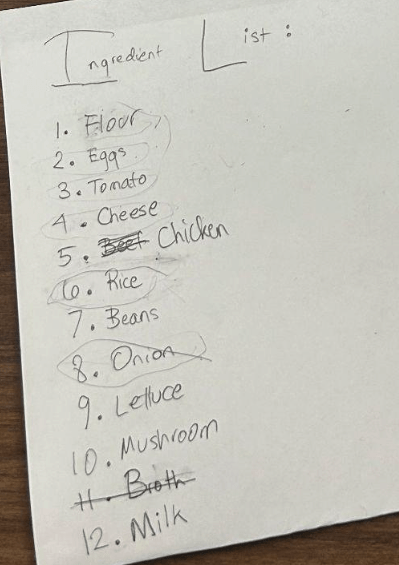
- Conflict:
Picky Eaters: Derives from direct competition for resources and the best scores.
Team Concept: This may involve collaborative conflict, such as disagreements on recipe direction, resolved through group discussion.
Types of Fun
Picky Eaters: Primarily offers challenge and fellowship fun through competitive gameplay and the social interaction of opponents. The game inherently encourages interaction through competition and negotiation of ingredients.
Team Concept: Also emphasizes fellowship(but in a different direction) and expression, providing fun through teamwork, collective achievement, and creative expression in recipe creation. Players derive fun from working together on the recipe, communicating, and making collective decisions to achieve a common goal, enhancing the social bonds between them.
Dynamics Emerging
Picky Eaters: The dynamic of adapting strategies to satisfy new guests each round and managing a changing market of resources fosters a reactive and tactical gameplay environment.
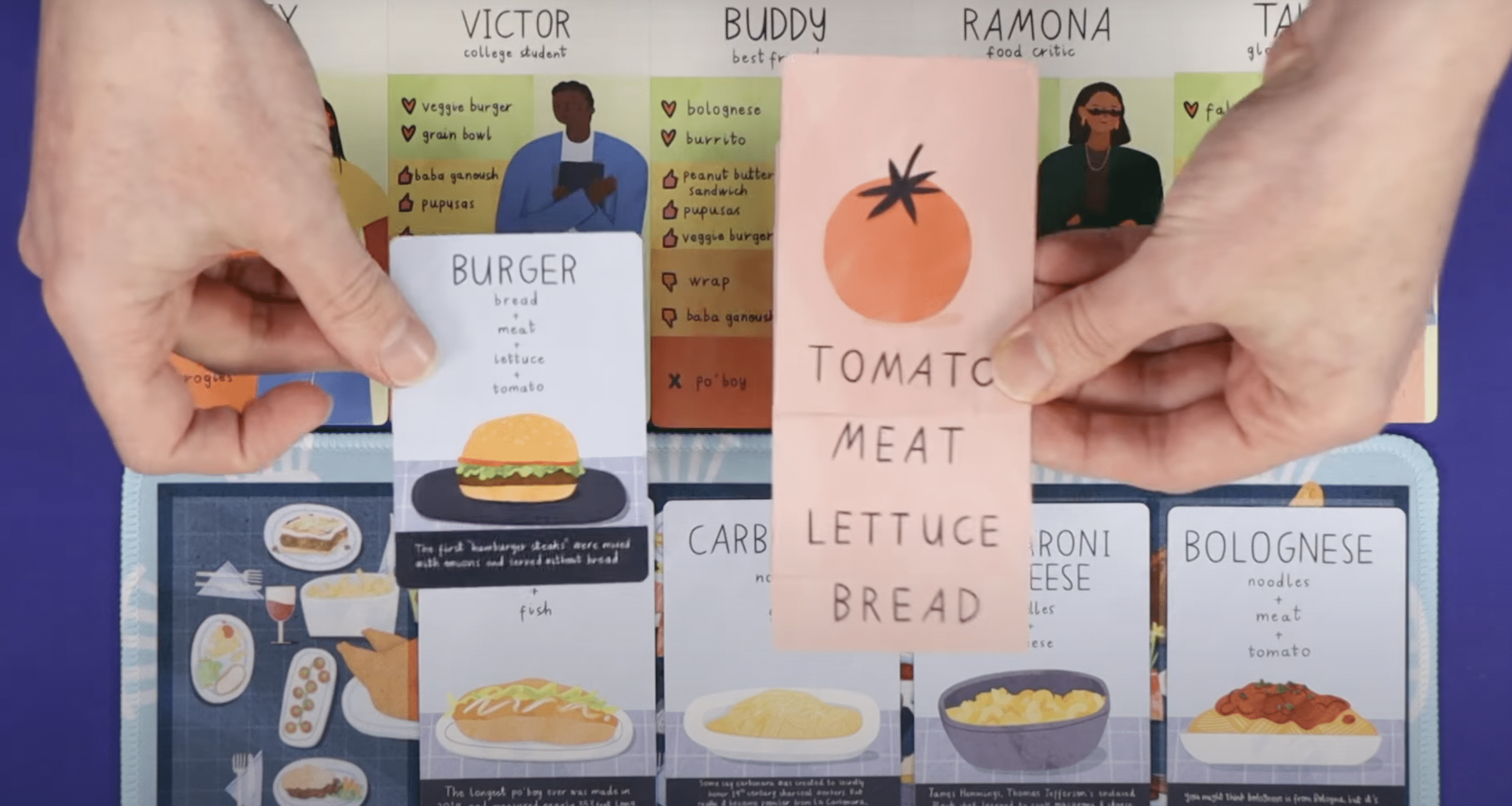
Team Concept: Promotes a dynamic of cooperative strategy development, where players must continuously communicate and adjust their joint approach to ingredient selection and recipe combination.
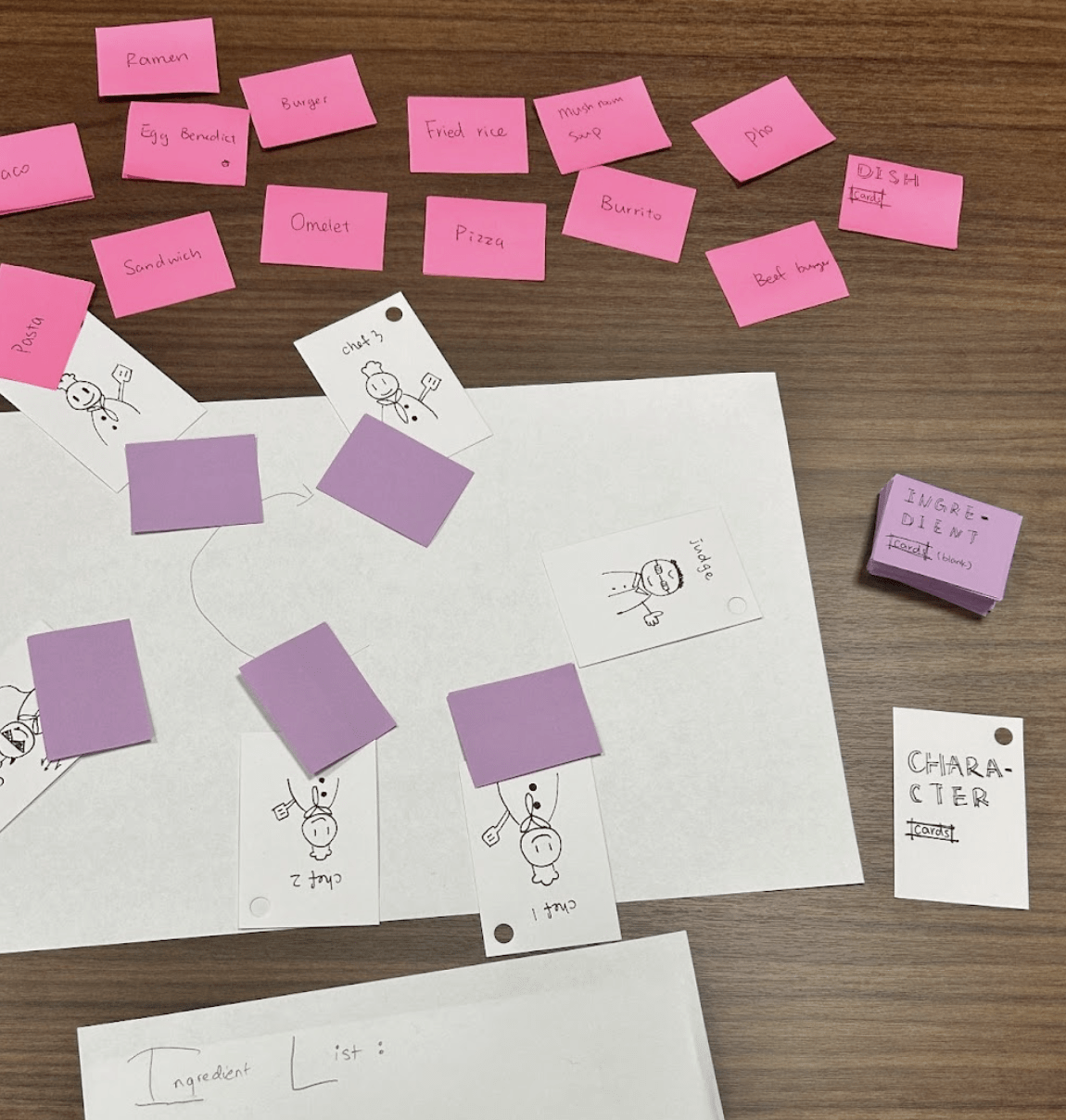
Picky Eaters creates dynamics where players must balance their personal goals with the group’s needs, similar to our game where players collaborate to build a single recipe. The negotiation and trading aspects can make gameplay lively and interactive.
MDA in Action
“Picky Eaters” uses mechanics like scoring on each recipe card(drawing, playing, and negotiating with ingredient cards) that encourage competitive behavior and individual decision-making. Competitive dynamics in “Picky Eaters” encourage individual strategy, negotiation, and cooperation. These emerged the aesthetics of the competitive nature of “Picky Eaters” providing excitement and tension that concludes on fellowship and challenge. On the contrary, our game on the selection of ingredients for a common recipe card would foster group decision-making and collaborative problem-solving. Our concept promotes a cooperative dynamic where teamwork and communication are crucial. Hence, it fosters a cooperative, community-building vibe where the aesthetic of our game is mostly fellowship.
While “Picky Eaters” engages players in a strategic competition to please finicky guests, our team’s recipe-building game invites players to collaboratively create culinary masterpieces, fostering a different set of dynamics and types of fun. This analysis underscores the importance of aligning game mechanics with desired player experiences and interactions, suggesting that our game could significantly benefit from further emphasis on cooperative strategies and mechanisms to enhance player engagement and enjoyment.




